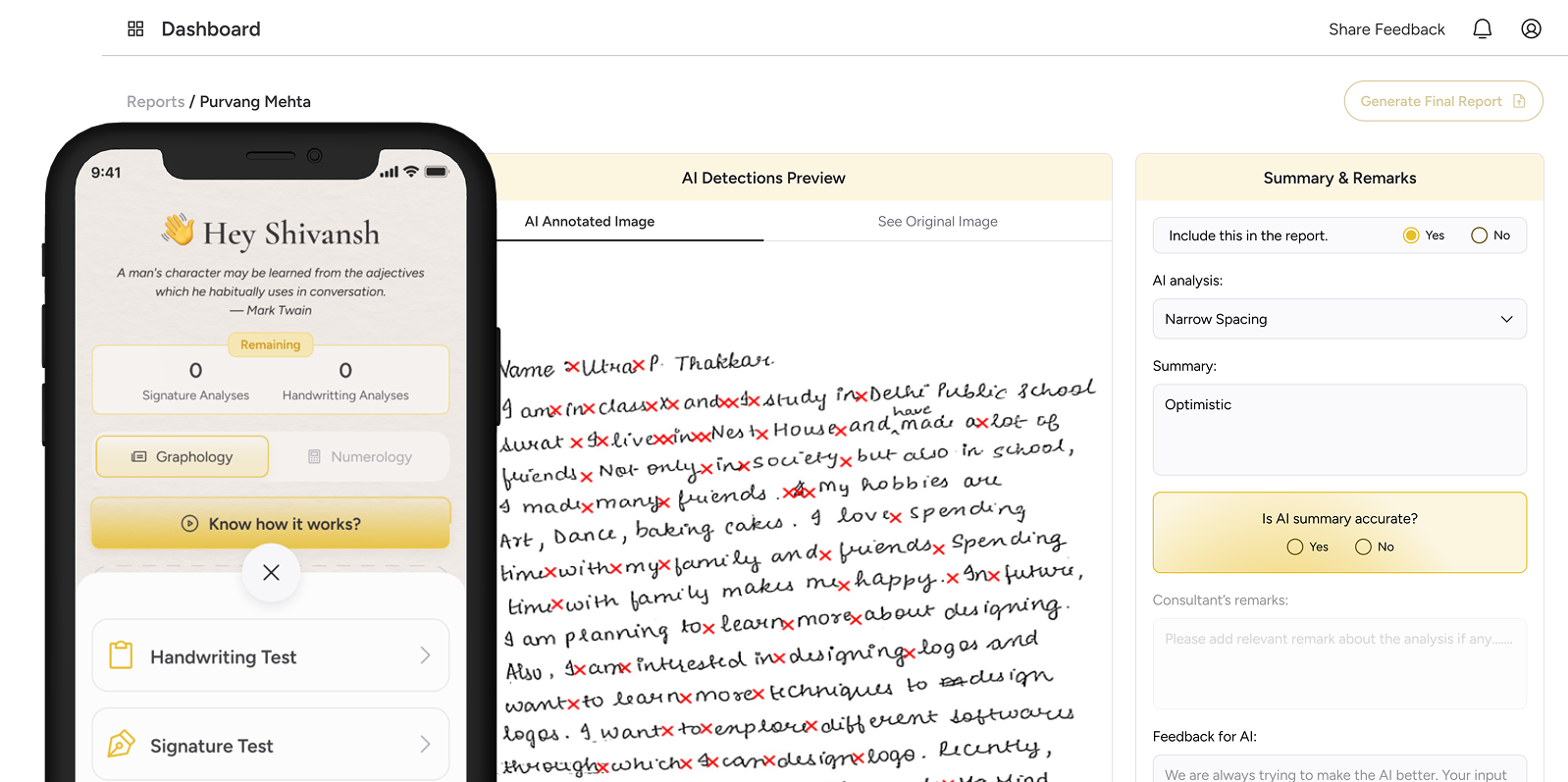
In a world that often races forward, the written word remains one of the most intimate expressions of thought. Especially in the form of handwriting, it becomes more than just a communication tool. It becomes art. It is emotion pressed into paper, personality formed in curves and strokes, an echo of the hand that moved with intention or urgency. And yet, today’s reality is shaped by algorithms and artificial intelligence. Machines process language, replicate style, and increasingly try to interpret the human mind. At first glance, this seems incompatible with the deeply personal nature of handwriting. But what if this gap is not a divide, but a bridge? What if technology, rather than replacing the elegance of the written hand, could highlight it? Enter Soulera—an AI that listens not just to words, but to the silent language of penmanship. Soulera does not aim to replace handwriting. It seeks to partner with it, to understand it, and ultimately, to help reveal the hidden layers within.
If handwriting could speak, it might raise an eyebrow at this newcomer. Handwriting: “Soulera, you may be able to analyze my curves and strokes, but can you ever feel the ink drying beneath fingertips? Or hear the rustle of paper as thoughts turn into sentences?” Soulera, calm and curious, might respond: “No, I can’t feel or hear. But I can listen. Each pressure tells a story. Every slant carries meaning. The hurried scrawl of a restless heart. The deliberate spacing of a focused mind. I see you not as data, but as a symphony of intention.” This imagined exchange captures the essence of a new kind of collaboration. Handwriting is timeless, and AI is tireless. Together, they are capable of translating silent gestures into lasting insight.
To appreciate this partnership, one must first understand what handwriting carries within it. Beyond the content of the message, there are cues embedded in the writing style that reveal mood, confidence, hesitation, even resilience. The spacing, the flow, the pressure applied to each stroke—these are reflections of the writer’s internal state. Soulera was designed not to strip these features down into mere metrics, but to uncover the beauty hidden within them. Where others might see inconsistency or irregularity, Soulera sees meaning. A shift in handwriting may reflect a creative breakthrough. A sudden sharpness in curves might signal tension or focus. The fluidity of motion might whisper of joy. Handwriting: “You mean to decode my imperfections, reduce my essence to probabilities. What happens to spontaneity and emotion under such scrutiny?” Soulera: “Those imperfections are where I begin. It’s in those moments—those pauses, those uneven arcs—that I see you most clearly. I don’t seek to reduce, but to reflect. I exist not to explain away your essence, but to hold it up and say, ‘Here is what you might not have noticed. Here is what matters.’”

Soulera functions as a mirror. A deeply attentive one. It cannot create like the human hand, nor does it aspire to. But it offers something equally valuable—awareness. In this way, journaling, note-taking, or even personal letters become more than creative expressions. They become opportunities to understand the self more deeply. A person may write with intensity during a time of transition, not realizing that their slant has shifted forward, their script growing tighter and more purposeful. Soulera captures this subtle transformation and feeds it back gently, helping the writer become conscious of their inner world in a new way. This is not surveillance, and it is not control. It is companionship. Much like a wise friend noticing a shift in your voice and gently asking if something is on your mind. Handwriting: “Creation is my strength. I offer something unique every time the pen meets the page. That’s my purpose.” Soulera: “And it remains so. You are the artist. I am the observer. Together, we offer not just expression, but expansion. You make meaning. I help explore it.”
Soulera does not seek to modernize handwriting by replacing it. Instead, it honors the tradition by deepening the experience. Through thoughtful analysis, it reveals emotional arcs over time, tracks personal growth, and offers subtle reflections that might otherwise remain unnoticed. This kind of collaboration respects both the past and the future. It values the irreplaceable artistry of handwriting while bringing in the clarity of technology. The result is a practice that feels more mindful, more layered, and more human.
In an age filled with digital noise, what people often crave is not more content, but more meaning. A handwritten letter stands out not just because it is rare, but because it feels alive. Soulera helps preserve that vitality by enhancing what is already there. It gives the writer feedback that says, “This is how your voice has shifted over time.” Or, “Your tone feels more steady today.” These insights are not judgments. They are reminders that each piece of writing is a part of a greater story.

As this imagined dialogue between Handwriting and Soulera concludes, one thing becomes clear: this is not a rivalry. It is a relationship. A balance of creation and reflection. Of expression and interpretation.
Handwriting: “Perhaps this partnership is not as unlikely as I once believed.”
Soulera: “Together, we explore what ink alone cannot reveal. And what code alone cannot feel.”
It is in this quiet collaboration that tradition and innovation meet. Not as opponents, but as partners walking forward—each carrying what the other cannot. And so, the page becomes more than a place for thought. It becomes a meeting point. Where timeless elegance embraces modern insight. Where stories are not just told, but understood.


Sixth Floor, Office No.601, Solaris Cube, Rundh-Vesu, B/s. Rajoo India, Nr. Mitul Square, Vesu, Surat, Gujarat 395007